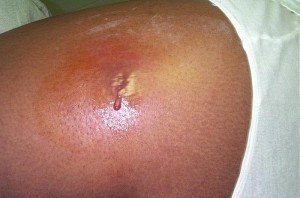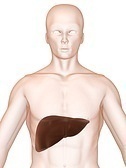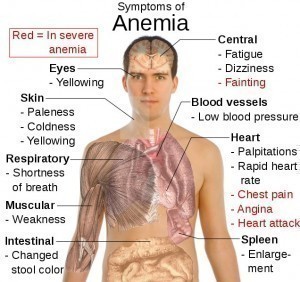Tay-Sach’s Disease
Tay-Sachs disease is a fatal genetic lipid storage disorder in which harmful quantities of a fatty substance called ganglioside build up in tissues and nerve cells in the brain. The disease is named after the British ophthalmologist Warren Tay who first described the red spot on the retina of the eye in 1881, and the American neurologist Bernard Sachs of Mount Sinai Hospital, New York who described the cellular changes of Tay-Sachs and noted an increased prevalence in the Eastern European Jewish population in 1887
Symptoms of Tay-Sach’s Disease
There are three forms of Tay-Sachs disease, categorized by the types of symptoms and the age when the symptoms first appear. The most common form appears when the child is 3 to 6 months old, with the disease progressing rapidly to death by age 4 or 5. At birth, the infant appears healthy and develops normally for the first few months of life, but as the buildup of ganglioside GM2 begins to affect nerves, symptoms appear.
Initially, symptoms may include
- Seizures
- Noticeable behavior changes, such as the infant stops smiling, crawling or rolling over and loses the ability to grasp or reach out
- Increased startle reaction
- Decreased eye contact
- Listlessness
- Increasing irritability
- Slow body growth with increasing head size
- Delayed mental and social skills
As the disease progresses, these symptoms become more dominant
- Feeding difficulties
- Abnormal body tone
- Loss of motor skills
- Blindness
- Deafness
- Loss of intellectual skills
Much rarer are the forms of Tay-Sachs that develop later in life and are due to low levels of the hex an enzyme, rather than the complete deficiency of hex A in the infantile form. Children with juvenile hex A deficiency develop symptoms between ages 2 and 5, and usually die by age 15. A milder form of hex A deficiency can develop anywhere from age 5 to the early 30s. Symptoms include slurred speech, an unsteady gait, tremors and, sometimes, mental illness.
Causes of Tay-Sach’s Disease
Tay-Sachs disease is caused by the absence of a vital enzyme called hexosaminidase A (Hex-A). Without Hex-A, a fatty substance or lipid called GM2 ganglioside accumulates abnormally in cells, especially in the nerve cells of the brain. This ongoing accumulation causes progressive damage to the cells.
By the time a child with Tay-Sachs disease is three or four years old, the nervous system is so badly affected that life itself cannot be supported. Even with the best of care, all children with classical Tay-Sachs disease die early in childhood, usually by the age of five.
By about two years of age, most children experience recurrent seizures and diminishing mental function. The infant gradually regresses, losing skills one by one, and is eventually unable to crawl, turn over, sit, or reach out. Other symptoms include increasing loss of coordination, progressive inability to swallow and breathing difficulties. Eventually, the child becomes blind, mentally retarded, paralyzed, and non-responsive to his or her environment.
Treatment of Tay-Sach’s Disease
Presently there is no treatment for Tay-Sachs disease. Anticonvulsant medicine may initially control seizures. Other supportive treatment includes proper nutrition and hydration and techniques to keep the airway open. Children may eventually need a feeding tube.






